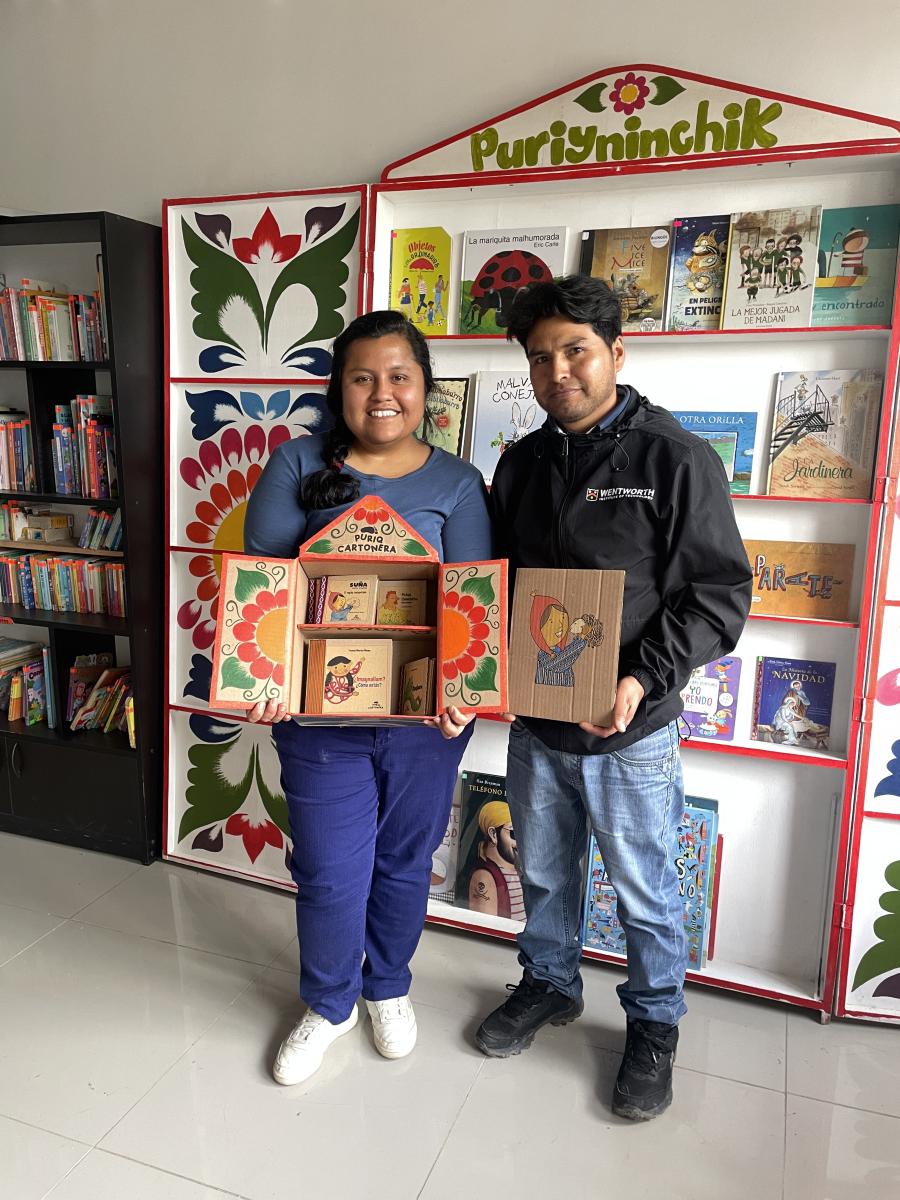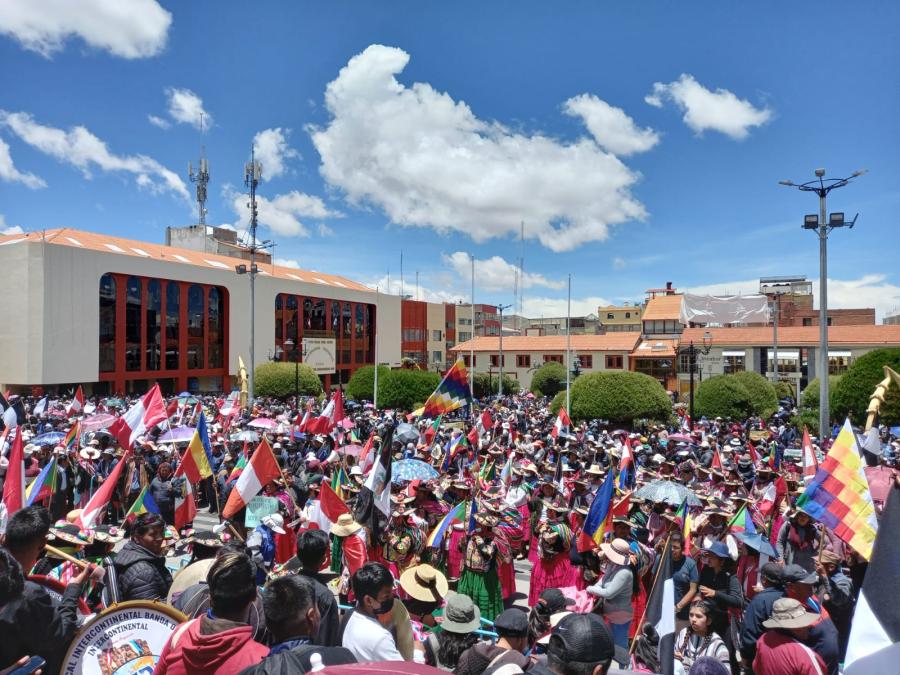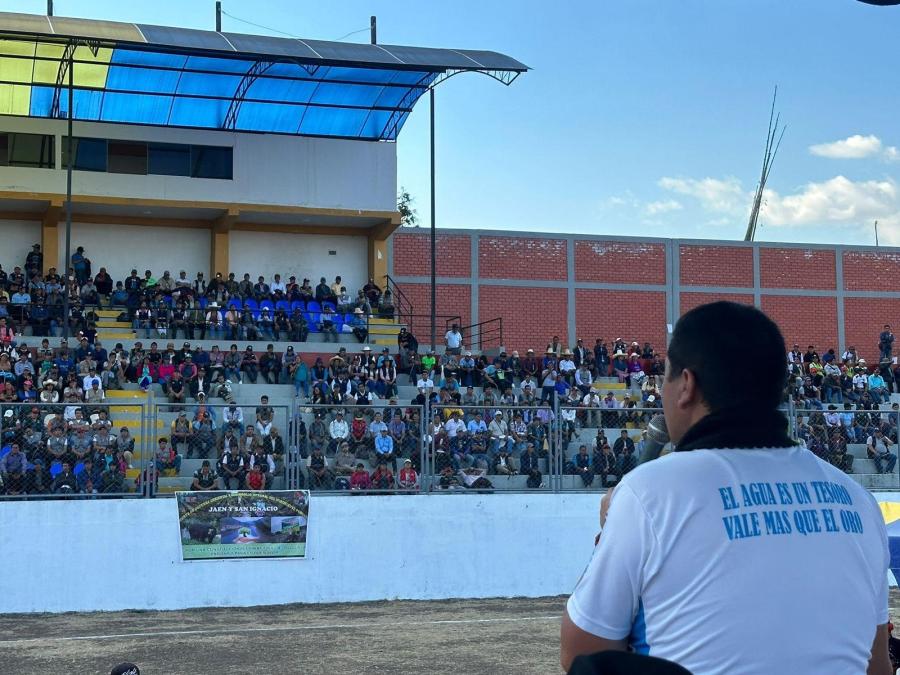Much has happened since a development scheme was first announced for the half-million hectares of tropical forest which form the Pichis and Pichis and Palcazu River valleys of central Peru. Because this land on the eastern slopes of the Andes was understood to be less densely populated and potentially more productive than the Andean highlands, yet relatively close to Lima's markets, the Peruvian government saw the valleys as sources for food and lumber, to be worked by colonists, surplus population from the nation's highlands and coast. A Special Projects Office for the Pichis-Palcazu Project was established in the Ministry of Agriculture in 1978 and had concentrated on titling land in the area, but when the Belaunde government was inaugurated in July 1979, Peru announced a greatly accelerated program. In September 1980 the United States Agency for International Development (USAID) was asked, an tentatively agreed, to finance essential infrastructure in the valleys - roads, centers for collecting and redistributing goods, and equipment to clear and prepare land.
Various scenarios, real and imagined, quickly emerged. Peruvian newspapers reported that a network of roads would quickly be carved into the forest. The small city of Puerto Bermudez was envisioned, as expanding to become a great metropolis, which would serve as the hub of cattle raising, agricultural, and lumbering activities. Various sources reported that 15,000 colonists would eventually be settled in the area. In anticipation, land speculators and other entrepreneurs quickly focused on the valleys. Development hopes, however, hung on the premise that the land was up for grabs and awaited intensive exploitation with nearly bursting fertility. The native people, Amuesha and Campa who had been occupying and working this land for centuries but were left unmentioned in the initial reports and agreements, thought otherwise. So did many other people who, in turn, alerted a network of individuals and organizations throughout the world.
Members of the Congress of Amuesha Communities and the Congress of Campa Communities wrote a letter to USAID offices in Peru and, in February 1981, met with Peru's Minster of Agriculture, who promised to respect and support the native people. At the same time, Peru's Committee for the Defense of Native Lands, particularly its member organization Copal, and CIPA, involved earlier with land demarcation in the Pichis-Palcazu area, directed letters of concern to various offices.
In December 1980, members of Cultural Survival discussed the social and environmental limitations on the project with officials of USAID in Washington, principally Mac Chapin, an anthropologist with USAID's Latin American section, and Robert Otto, Chief Environmental Office of USAID, USAID subsequently indicated that a thorough social and environmental evaluation would precede any further decisions on the project. In March, Charlotte Miller and Hector Martinez, U.S. and Peruvian anthropologists respectively, began a seven-week study of social conditions in the area. Gary Hartshorn and Joe Tossi, both from the Tropical Science Center in Costa Rica, prepared the preliminary environmental impact analysis. Before traveling to Peru, Miller and Chapin met in Cambridge with members of Cultural Survival and Richard Chase Smith, an anthropologist with over a decade's experience in the Pichis-Palcazu area.
Martinez and Miller's subsequent report revealed a social situation far more complex than that suggested by the initial newspaper articles. They first noted that most large-scale development and colonization projects not only fail to achieve their constructive goals, but leave ecological destruction and displaced native people in their wake. The Pichis-Palcazu Project would probably not be an exception. They stated that "there are numerous constraints to development in the region due to problems of existing ethnic conflicts, land tenure disputes, social stratification, existence of poor institutional infrastructure...monopolistic economic activities, and forestry extraction concessions." In the Pichis-Palcazu area, much of the land was occupied but was still untitled, opening the way for problems with land speculators while also inhibiting local development projects. Miller and Martinez recommended that, before any development program was initiated or any road-building undertaken, land titling was essential. Colonization, they argued, should be de-emphasized in favor of local development.
At present, an extremely exploitative and hierarchical social system exists in the valleys, with native people generally disadvantaged as a group. Consequently the anthropologists recommended periodic monitoring of any project in the area, to insure that it did not accrue advantage to local elites. To provide for broad-based local development, they recommended training programs which would include legal assistance, accounting, as well as technical skills. These would allow local populations to take advantage of increased across to credit, agricultural extension services, equipment, and centers for appropriate technology.
Finally, and perhaps most importantly, they noted that "the natives are extremely anxious and concerned that the government plans to take away their recognition [as communities], take away their legal titles, refuse to grant land titles to communities without them, relocate untitled native communities on the lands of those with title, and allow timber extraction concessions on native lands." As a remedy, "the project design should include explicit protection of native groups for all of these feared incursions". Furthermore, they suggested that the project give native communities, help in reinforcing their identity...through such programs as bilingual education, aid to the existing Casa Cultural, coordination with and support to the Amuesha [and Campa] Congress, support to existing organizations...and the encouragement of [locally administered]...projects at strategic points in the valley, bearing in mind that these programs should be very small in scale to avoid the negative impact of a 'development project boom economy' in native communities.
In general, the recommendations were designed to safeguard the valleys' residents from outside exploitation while working to provide the sorts of development schemes which the Amuesha and Camps had requested in their letter to USAID. The only request by native not specifically included in the report was one in which they stated that "the Amuesha Congress of the Palcazu River and the Campa Congress of the Pichis should be recognized and activities should be coordinated with them." Hopefully such participation will become part of the final projects.
At the same time, Hartshorn and Tossi briefly reported on the environmental situation of the Palcazu and Pichis region.
It is probable in view of past experience with colonization of the Peruvian humid forest region that the environment present in this region will in itself constitute a major problem to success of the project. Elsewhere, as for instance in the Tingo-Maria-Pucallpa Highway, the Huallaga Central area, the Cosnipata, neither planned nor spontaneous colonization by immigrant groups for outside the region can be termed in any way to be successful. A history of repeated failures and retreats accompanied by resource devastation characterizes these places, [where] one currently survives only because of the illicit market for coca leaves. If the Palcazu Project is not to be another sad repetition of these failures and, eventually a rural slum area, it is essential that project planning be based firmly on what is practicable and realistic in terms of the physical environment - climate, soils, topography, drainage, and biological resources of the basin itself.
They recommended, and USAID is now undertaking, an extensive environmental analysis.
In the meantime, the social study and the preliminary statement of environmental impact have already led to a new title for the project, Central Selva Natural Resources Management Project. A recent status report on this project illustrates its new direction. After noting a Congressional mandate to USAID to deal "explicitly with forest resource depletion and associated soil and water resource deterioration," the report states that, to encourage a long-term economic gains plan, the project will: 1) increase awareness of the problems incurred by deforestation and natural resources degradation; 2) increase food production through ecologically appropriate systems of agriculture; 3) support the development of forest resources; and 4) provide assistance in managing natural resources.
The report also indicates that before initiating programs to increase agricultural production, and before opening up the area to any new colonists, "land tenure security [is] essential, so that greater participation will be encouraged." Legislation facilitating such security is already in place; Peru's Ley de Comunidades Nativas is one of the most enlightened pieces of legislation for native people in Latin America. It need only be implemented to assure the Amuesha and the Campa their legal rights.
Thus, although the project is not yet underway, and when it begins it must be carefully monitored to insure that the results resemble the design, it will not be the large-scale colonization and intensive agricultural scheme originally envisioned. The social and environmental future of the Pichis-Palcazu region appears to be a bit more secure.
The implications of this project extend far beyond the Pichis and Palcazu valleys. For the first time, USAID, one of the world's major development agencies, conducted a social analysis before the project was even designed. In many cases, such evaluation follows the formal design of a project. Consequently, one only learns how the plans will affect the local population and how, if necessary, to determine some form of compensation. The utilitarian logic which spawns such an approach accepts that the small number who suffer from the project should be compensated, but stresses that the situation of the population in general will be improved. However, development history indicates that the general good is rarely achieved. And the local population usually receives the sort of short-term compensation e.g., cash payments) which does nothing to assure the survival of future generations. But by first considering the limits of the local environment and the population already living off these resources, a rational long-term sustained yield development project can be designed. In Peru and elsewhere this is the sort of assistance native people and other local groups have requested for years. Peru's future, and that of any other nation, will be better served be development schemes which insure the survival of the nation's renewable resources as well as the native people who best understand how to utilize these resources.
Article copyright Cultural Survival, Inc.



